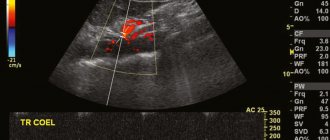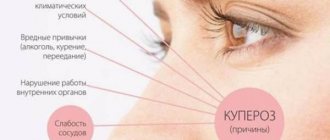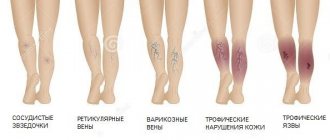Low blood pressure, psychosomatics, is less common than hypertension, but brings no less problems to the patient. The relationship between this disease and emotions and stress is no longer an assumption. This is a scientifically proven fact.
Hypotension is a disease expressed in lower than normal blood pressure in the arteries. A decrease in pressure does not pose a serious danger to the life of the victim, but can radically affect its quality. After all, the patient often does not associate his poor health, constant fatigue, frequent fainting and dizziness with a decrease in blood pressure.
In psychology, it is believed that low blood pressure and the phenomenon of laziness are directly interrelated.
If this is relevant to you, come to the free webinar by Konstantin Dovlatov “Tired of lying towards your dream? 3 super exercises that will get you off the couch. A recipe for moving towards a goal from true achievers."
Characteristics of hypotension and hypertension
Hypotension (hypotension or low blood pressure) is a condition of blood vessels in which there is a decrease in both the upper (systolic) and lower (diastolic) parameters.
Blood pressure that is outside the norm gives rise to a lot of problems that prevent a person from living a normal life.
In this case, the body experiences a lot of unpleasant symptoms during hypotension and hypertension:
- Constant weakness, lethargy, apathy.
- Dizziness.
- Paleness of the skin.
- Extremities are colder than the rest of the body.
- Darkening in the eyes.
- Dyspnea.
- Disturbances in the functioning of the heart.
- Increased sweating.
- Emotional instability.
- Memory impairment.
- Fainting with hypotension.
- Unsteadiness of gait with hypotension.
- Hemorrhages – with hypertension
Causes of hypotension
Recent studies, as well as the studies of L. Hay, suggest that the vast majority of cases of hypotension of the body are a certain form of neurosis. There is a change in the centers of the brain that are responsible for the condition of blood vessels. The psychological and neurological state of a person changes.
The reasons for changes (namely a decrease) in blood pressure, with the formation of hypotension, are caused by the following psychosomatics:
- All psychological traumas.
- Stressful situations.
- Regular lack of sleep.
- Constant overwork.
All psychological causes are primary causes of hypotension, while there are secondary causes. According to research results, secondary causes affecting low blood pressure (hypotension) are a variety of physiological diseases.
As a rule, it is the hypotensive condition that is more difficult to treat. This is caused by treating the symptoms without addressing all the causes. Therefore, psychosomatics does not find the drug effect on low blood pressure necessary or effective.
Methods of alternative medicine and psychosomatics: blood pressure jumps? Relax!
When treating hypertension at home, you can also use relaxing techniques, such as massage. It is important to observe a work-rest regime, engage in physical exercise, and also follow a low-salt diet, eat more vegetables, berries, especially viburnum and hawthorn. There are also traditional medicine recipes that will help reduce blood pressure.
- aloe juice on an empty stomach every morning for 2 months. To take, dilute 3 drops of fresh juice in 1 teaspoon of boiled water at room temperature.
- calendula inflorescences (1 tablespoon) in a glass of boiling water. Leave for 15 minutes. Drink 0.25 cups 4 times a day.
- Use a pharmacy tincture of motherwort - 30 drops before each meal.
- Prepare an infusion of flax seeds . Place 2 tablespoons of seeds in a thermos, pour 2 cups of boiling water, leave overnight. Drink 100 ml 20 minutes before meals 3 times a day.
Thus, psychosomatics and traditional medicine treat high blood pressure differently, and the choice of the most effective method is yours!
How to change psychological attitudes to eliminate hypotension and hypertension
L. Hay considers it correct to influence hypertension and hypotension through psychological correction of difficulties, disharmonious states of the body, using psychosomatic methods. The accumulation of difficulties leads to the fact that blood pressure in the body drops not only periodically. It falls regularly and hypotension becomes chronic. Low blood pressure, in turn, prevents you from living a full life.
Here's what Hay recommends doing to raise a low blood pressure reading.
Guilt
Psychologically, a person may experience a feeling of guilt, it will torment him for a long time and a lot. Low blood pressure will be especially pronounced if thoughts about your guilt are constantly scrolling through your head. It doesn’t matter at all whether this guilt is reality or fantasy. The worst thing is that a person cannot let go of this situation.
As a result, Hay argues that a painful state of the body arises, expressed in the manifestation of hypotension or hypertension - as a reflection of psychological problems.
Self-hypnosis
Another category of psychological difficulties, according to Hay, is the process of self-hypnosis. Most often this happens under the influence of certain people who have undeniable authority. Even one incorrect statement can result in persistent self-hypnosis. Subsequently, it begins to have a certain physiological effect in the form of hypotension.
Internal conflict
Internal conflict lies in the fact that a person simultaneously has two or many equal desires. He cannot choose between them. Thus, tension inside is growing all the time. As a result, it leads to hypotension.
Lack of attention from parents
Lack of attention and care from parents, Hay believes, first affects the child’s psycho-emotional state. Subsequently, it forms hypotension in him, as a psychosomatic symptom of low blood pressure. In addition, as he grows up, he projects this model of behavior onto his future family. There is also a high probability that his children will experience a lack of attention. As a result, the next generations have the opportunity to develop a chronic hypotensive condition.
Cruelty and even harshness on the part of parents
Also, psychosomatics of high blood pressure occurs when an adult was raised in oppressive conditions as a child. Excessive emotional and psychological aggression and attacks from parents cause constant tension in the child, which he carries into adulthood. Sometimes this develops into feelings of fear or anger at their parents, making the situation even worse. It also results in a condition in which hypotension is expressed.
Anger and fear
Anger, in the modern world, also often conquers the consciousness of people, displacing all positive emotions. Fear is an even more frequent visitor, since there is almost always something to be afraid of - lack of health, loss of work, future future. This is psychosomatics of high blood pressure .
What to do if you have hypertension?
It is possible to get out of the vicious circle of hypertension, but this will require the help of specialists. It is most effective when not only a therapist or cardiologist, but also a psychotherapist or psychologist participates in the treatment of patients with hypertension: the doctor treats the somatic component of the disease, and the psychotherapist (psychologist) helps deal with the mental (psychological) component.
In most cases, in patients with hypertension, problems with increased anxiety, managing their emotions, etc. can be identified. Therefore, during therapeutic work attention is paid to:
- Learning techniques to help cope with anxiety, anger, fear and panic attacks;
- Learning how to properly experience your emotions, and not “drive” them inside;
Work is being carried out aimed at self-knowledge and personal development (with the goal of better understanding oneself, one’s own emotions, self-acceptance). Thanks to psychotherapeutic assistance, a person has the opportunity to “outgrow old anxieties and fears” and learn to cope with the stressors of modern life.
We constantly detect plagiarism on our materials without providing a clickable follow link to them. In this case, without warning, we turn to Google DMCA , which leads to pessimization of the plagiarist. On the contrary, we welcome the popularization of our materials, but with the obligatory active follow link to this page psyhosoma.com/psixosomatika-zabolevanij-gipertoniya/ .
How to normalize blood pressure
According to L. Hay, any disease must be treated by determining the cause that caused it, that is, using psychosomatics. Then you need to realize it. After all, people often at the subconscious level strive for illness. This is due to their rejection of themselves and their imaginary problems. For healing, it is important to forgive yourself - this is how self-healing from high and low pressure is achieved psychosomatically.
It is simply necessary to treat hypotension, as it brings a lot of inconvenience and limitations, such as:
- Reluctance to act, to strive for something.
- Inability to share time with your family and friends. All this arises due to a constantly sluggish state. And it only progresses over time.
- Lack of any self-development.
- Depersonality of a person.
It is important to get the right help. After all, even the most difficult cases of changes in blood pressure can be cured - the main thing is not to give up and believe in success, regardless of the reasons.
If you have lost faith in your own strengths and lack any motivation for success, you should consult a psychologist. It will help to understand the root causes that influenced the painful state of the body.
Here are the rules of psychosomatics that should be followed:
- You shouldn’t engage in a lot of self-criticism, soul-searching and searching for all other problems. This is the surest way to get hypotension.
- The presence of problems in the body is not a reason to dwell on them. Be sure to lead a normal lifestyle.
- Don’t put all the accumulated problems solely on yourself. This is a lot for one person. It is worth distributing it to your immediate family or to your colleagues (depending on the type of problem).
- Even negative situations should be viewed through a positive lens. This is hard work on yourself - but it must be done.
- Look at the world with optimism. It is sacred to believe that if something does not stick, then there will definitely be a lighter streak ahead.
- The body should react to any event, especially a negative one, without excessive nervousness.
You need to work on yourself a lot - this will allow you to get a certain result. This way you can eliminate the signs of hypotension, use affirmations to take control of fear and improve your quality of life.
What is psychosomatics and how does it manifest itself: the opinion of a psychologist
One of the main requests with which people often turn to the Moscow Psychological Assistance Service is anxiety and stress. Experts note that it is imperative to work with these negative emotions, since they can have a serious impact on human health. Psychologist Elena Gerasimova talks about what psychological causes cause somatic disorders, what psychosomatics is and how it manifests itself.
In life, we constantly accumulate mental stress, and our body reports that something is wrong with it. This phenomenon is called a “psychosomatic disorder.” Psychosomatics is a branch of medicine and psychology that studies how feelings and experiences affect a person’s physical health.
Psychological reasons that can cause somatic diseases:
- Lack of positive emotions (low mood, anxiety, depression, stress). A person needs positive impressions no less than vitamins.
- Negative destructive thoughts directed at oneself or at other people: “everything is bad.”
- Repeating certain phrases that provoke health problems (for example, the phrase “I can’t see you” can lead to myopia).
- Voluntary “transfer” of the illnesses of someone close to you (identification).
- Exhausting feelings of guilt, self-flagellation.
- Self-hypnosis under the influence of sources that are authoritative in a person’s opinion (information from encyclopedias, the Internet, television).
- Manipulation of a non-existent, fictitious illness (with the help of an illness a person tries to organize the actions and feelings of other people).
When your heart hurts
25-year-old Muscovite Margarita turned to a psychologist. The girl dated a young man, Ivan, for two years. She dreamed of getting married and starting a family. Ivan, on the contrary, was happy with everything. He was in no hurry to formalize the relationship legally, because he believed that there was no need to rush, he needed to live for himself. The girl more than once raised the conversation about marriage and having children, but the young man answered irritably: “Why do we need formalities? We feel so good together! Are you ready to be a mother at all? These baby diapers, screams and all that? You yourself are used to silence, but the child will constantly demand attention. If you want, babysit your niece.” This answer, which was not received for the first time, did not suit the girl, and another scandal broke out between the couple. Accusations of Ivan being frivolous and irresponsible began. But he continued to stand his ground.
The young people decided to separate for a while. Everyone thought about their own. Margarita was very worried, she began to suffer from frequent headaches, insomnia, loss of appetite and heart rhythm disturbances, and her blood pressure periodically increased. My health worsened and I had to see a doctor. The examination did not reveal any pathology. The doctor recommended that she see a psychologist.
“Functional heart rhythm disturbance is a reaction to conflict situations, anxiety, when a person takes everything to heart. There is a connection between fear and heart rate. Blood vessels regulate the autonomic nervous system, which is connected to our emotions and directly interacts with feelings,” notes the psychologist.
Mental stress, conflicts and worries lead to contraction of smooth muscles, changes in the condition of blood vessels and, as a result, increased blood pressure, heart rhythm disturbances, and chest pain. Fear can cause increased heart rate and heart pain, and conversely, pain with an altered heart rate can cause fear. Both processes increase their impact on each other and uncontrollably turn into an attack.
How can you help yourself
At the moment a familiar pain occurs, remember all the details of the situation: what actions you performed, what you looked like, what sensations you felt, what you thought. If you were talking with someone at this time, be sure to remember the words of your interlocutor and your thoughts about them. This will help you analyze and determine what exactly you are reacting to.
The following psychosomatic disorders are distinguished:
- diseases:
- cardiovascular system (hypertension, coronary heart disease are the most dangerous, as they lead to strokes and heart attacks);
- gastrointestinal tract (gastric and duodenal ulcers, ulcerative colitis);
- endocrine (diabetes mellitus, Graves' disease - thyrotoxicosis);
- respiratory system (bronchial asthma);
- skin system (neurodermatitis, scabies on certain parts of the body);
- musculoskeletal system (rheumatoid arthritis, osteochondrosis);
- headaches (tension pain - muscle pain in the neck, back of the head, temples, pressing dull pain, combined with other pain, for example, pain in the legs; pain that covers the “whole head”, paroxysmal, sharp, throbbing, not combined with other pain; pain unilateral, sometimes covering both sides);
- oncological diseases (tumors, neoplasms);
- vegetative neuroses — in the first place are vegetative symptoms (no organic lesions):
- cardioneurosis - extends to the cardiac system;
- hyperventilation syndrome - a pathological condition similar to asthma, without organic damage, spreading to the respiratory system (with all organs intact);
- panic attacks - manifested in a powerful vegetative shift (impaired cardiovascular activity, gastrointestinal tract, feeling of lack of air, increased blood pressure, feeling of fear, anxiety, tremors, etc.);
- hysterical conversion - hysterical symptoms can be manifested in any disease; they arise when a person wants to achieve a certain goal through demonstrations and manipulations.
When a fictional disease becomes reality
27-year-old Victoria, at the insistence of her mother, received a higher education in economics, but did not want to work in her specialty. Her boyfriend offered various employment options, but the girl found any excuses and reasons not to work. She liked a carefree life, and she didn’t want to change anything. The young man was sent on a business trip for a week; he recommended that the girl find a job, as she might have financial difficulties. Having promised to look into this issue, three days later Victoria became bored. She spent most of the money left for groceries on an expensive dress and decided to ask to visit a married friend: “there will always be something to eat there.” Victoria quickly grew tired of the gatherings, since her friend’s four-year-old daughter required constant attention. Vika began to get irritated, because she came to share her problems, but here the child does not allow her to talk calmly! The girl left the house.
When the young man returned, the first thing he did was inquire about Victoria’s progress in finding a job, and was involved in a colorful story about fruitless unsuccessful interviews with a demonstration of a new dress. The young man was angry at the prank, and he gave an ultimatum: either Victoria looks for a job, or they separate. The girl did not expect such a turn of events. What to do?
The next morning, Victoria complained of feeling unwell, citing pain in the heart, weakness, dizziness and nausea. Victoria feigned illness, deciding to stall for time. After a week of continuous “poor health,” the young man took Victoria to the doctor for examination. The results showed complete health. Having confirmed the deception, the man decided to leave. Vika tearfully begged him to save the relationship, claiming that she was “really bad” and needed help. The young man gave her a second chance. After some time, one morning the girl woke up from severe pain in the chest and shortness of breath. She got scared and went into loud hysterics. An ambulance was called. This time Victoria did not pretend, real symptoms appeared. She was sent for treatment to a neurosis clinic with a diagnosis of psychosomatic disorder. After successful treatment, Victoria turned to a psychologist.
Exercises that will help improve your condition:
"Candle"
Imagine that there is a large candle in front of you. You need to take a deep breath and try to blow it out with one exhalation. Repeat. Once again.
Now imagine that you need to blow out five small candles. Take a deep breath and blow them out one by one in small portions of exhalations. Repeat. Once again.
“My illness in the drawing”
Draw and tell it to yourself or someone close to you:
- How did you find out about the disease?
- How did you change when this happened?
- What is the worst thing you imagine about your illness?
- What happens when you recover?
- What does being healthy and strong mean to you?
- How do you see yourself in the future?
«Sun"
Draw a sun with rays and write your positive qualities on these rays. Read them out loud to yourself or someone close to you.
See how many positive qualities you have! There is something to praise and love yourself for. Do this often!
You can learn more about psychosomatics and get answers from a psychologist to your questions from specialists of the Moscow Psychological Assistance Service, both in individual consultations and during webinars. You can sign up for consultations and online classes on the website.
Source
Press service of the Department of Labor and Social Protection of the Population of Moscow
Hay table
L. Hay examined and studied the relationship between all human diseases and the causes that cause them - that is, psychosomatics. Part of her table with reasons and affirmations for eliminating hypertension and hypotension.
| Type of disease | Reasons that influenced the formation of the disease | Affirmations are attitudes aimed at getting rid of psychological problems, and, consequently, physical illness. |
| Vascular problems | Blood is joy circulating in its own channel. If there are problems with the arteries, this means that the person is not able to experience a feeling of joy, he does not know how to enjoy anything in life. | I am filled with joy, I realize all the joy of being. Joy spreads through my body with each new heartbeat. |
| Hypertension (hypertension) | The psychological cause of high blood pressure is aggression and fear. There are also many questions that have never been answered. | I consign my past to complete oblivion. Peace and tranquility reign in my soul. |
| Hypotension (hypotension) | The psychological reason for low blood pressure is the lack of love on the part of the parents towards the child. In this regard, the translation of such a model into adulthood. An adult does not feel confident in his own abilities. | Starting from today, my life is full of joy. I live in it. My life is full of joyful moments and events. |
Tips and tricks from L. Hay
Louise Hay is a pioneer and one of the founders of solving emotional difficulties and problems using psychological self-help methods, which are used to eliminate a specific type of disease. For example, as in this case - to eradicate hypotension or hypertension. But in her opinion, she will not be able to heal completely on her own. In any case, at the initial stage you will need a psychotherapist. It will help to raise the entire layer of layered difficulties and determine how many there are and what exactly influenced the occurrence of a particular disease in the body.
Speaking about independence, Hay meant mostly preventive work to prevent the occurrence of hypotension, hypertension or other diseases. To do this, she recommends using mental hygiene and psychoprophylaxis.
Mental hygiene covers the following areas:
- Family.
- Sex life.
- Work.
- Rest.
- Upbringing and education.
Everything related to preventive influences on oneself personally is designed to improve and influence such basic needs of the body and soul of every person, such as:
- Care and guardianship.
- Love and relationships.
- Respect for yourself and your environment.
- Feeling of happiness.
- Freedom of self-expression through creativity.
- Breadth of thinking.
- Having memories that give optimism, faith and happiness.
Healing techniques of psychosomatics
The essence of Hay's methods is an integrated approach consisting of:
- Visualization, which is aimed at the image of a person after the body has been healed.
- Affirmations. They represent verbal attitudes.
- Various methods of psychotherapy, taken together or separately.
- All non-traditional methods of treating the body.
- Cleansing the body.
Using all these methods, hypotension and hypertension in the body of patients is effectively corrected. And the body receives the necessary energy for normal functioning. It is especially important for a person to have more energy during hypotension.
Work on yourself every day
Louise Hay suggests doing several exercises every day.
This will help raise self-esteem, relax the tense nervous system of the body, look at things differently, and distance yourself from everyday problems and the reasons that caused them. The implementation technology is simple, which allows you to use them not only at home, but also during a few free minutes at work. You can even practice them while commuting to or from work. Regular exercise will also help normalize high or low blood pressure to normal levels. This happens due to the harmonization of the inner world using psychosomatic methods. But such work on oneself should be carried out regularly, both with hypotension and hypertension. “Liberation” - this exercise is designed to free you from fear and obsessive states. To perform it, you need to breathe deeply. At the same time, you will need to repeat to yourself the following phrase: “I am in complete harmony with myself, I do not feel fear.”
"Getting rid of the past." With this exercise you can get rid of negative experiences in the past. You need to learn to look at even the most negative moments from the right angle and give everything a positive spin.
Diagnosis of the causes of low blood pressure psychosomatics and its healing using Spiritual Integration techniques.
Effective methods of rapid diagnosis and healing are offered by the author's development of K. N. Dovlatov - Spiritual Integration. This progressive psychologist, coach, candidate of psychological sciences, has developed a unique and one-of-a-kind system for interacting with one’s own soul.
Using the methods and developments of Spiritual Integration , a person gets the opportunity to independently, in the shortest possible time, realize the real, true origins of their diseases and problems. But the main thing is not only to understand, but to be in a state of high vibrations, using the strength and power of your soul, to get rid of diseases and troubles.
Diseases that are incurable, from the point of view of official medicine, disappear. Low blood pressure due to psychosomatics is no exception. The very name of the system encrypts the explanation that obtaining one’s own integrity occurs at the level of subtle, spiritual plans.
reintegration should be highlighted . This technique allows for communication at the level of human souls. Sounds like a fairy tale? And then a miracle happens - a person turns to Spiritual Integration to solve a specific problem, and as a result, gains a general strengthening of his health and life in general. At the same time, training in the techniques and methods of this system is open to everyone, both through live training and through online training.
Additional Tips
The author of the technique also suggests following a number of recommendations. Following them must be conscious and regular. Gradually, all these tips should be made into a habit, akin to work and will reduce the manifestation of hypotension and hypertension.
- Every morning, when you wake up, thank the world for everything, for the opportunity to breathe, walk, love, create, enjoy life.
- Do only what brings you pleasure. If work is a burden, then every effort must be made to change the situation for the better. Work should be enjoyable, otherwise it becomes a constant irritant. The result is poor health.
- The environment, that is, all close people and friends, should become a source of joy. If communication with a person causes psychological discomfort, then you need to get rid of it - avoid such contacts, or reduce them to a minimum if possible. As a last resort, do not take the results of communication to heart.
- Availability of weekends and vacations.
- Full sleep.
- Contact a psychotherapist for advice and help.
- Write a list of all your personal wishes.
How the transition of emotion to the body is formed
You probably already know that we have three automatic reactions: fight, flight and freeze. In a stressful situation, we unconsciously choose one of them.
But, if for animals everything is very simple (after the situation they discharge both their psyche and body), we usually suppress our reaction.
That is, we react to the trigger (which is no longer very good) and suppress our emotion. And then we continue to experience it, but only “to ourselves.” Thinking about what should be done. And all the tension is transferred to the body (teeth are clenched, hands are clenched, muscles are clenched, and over time, internal organs are added).
The hardest thing is at work. Where you need to constantly defend your boundaries. But the fear of losing your job and the inability to live your feelings does not allow you to do this in peace for your psyche.
People with high blood pressure usually have the following qualities:
— sensitivity; - determination; - good upbringing; - desire to help.
The qualities are very positive, but along with them you need to learn to work on your reactions.











